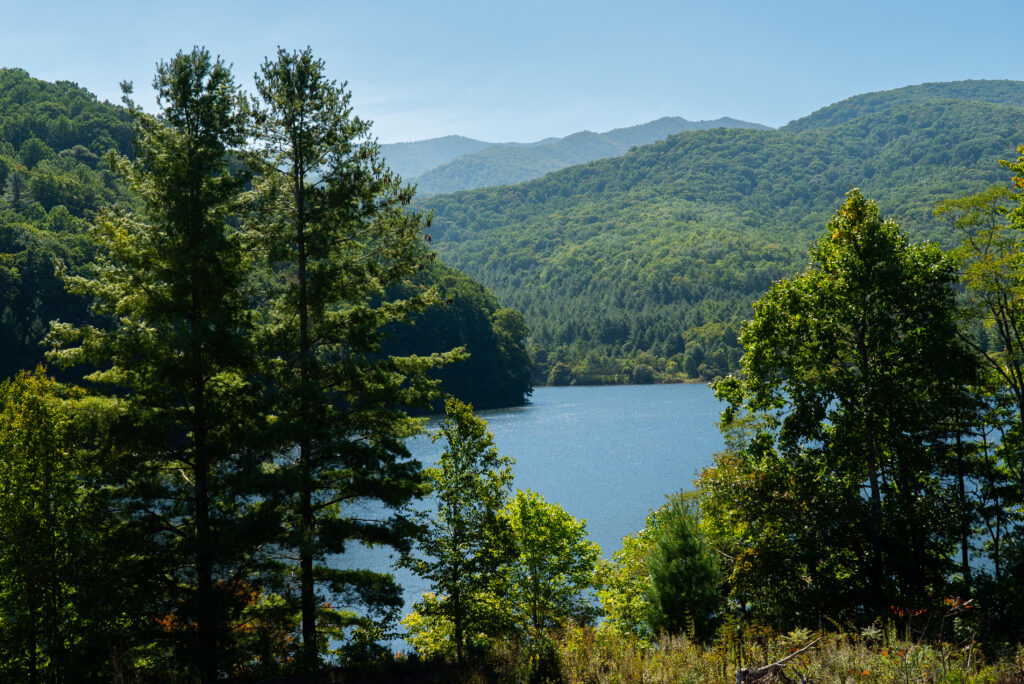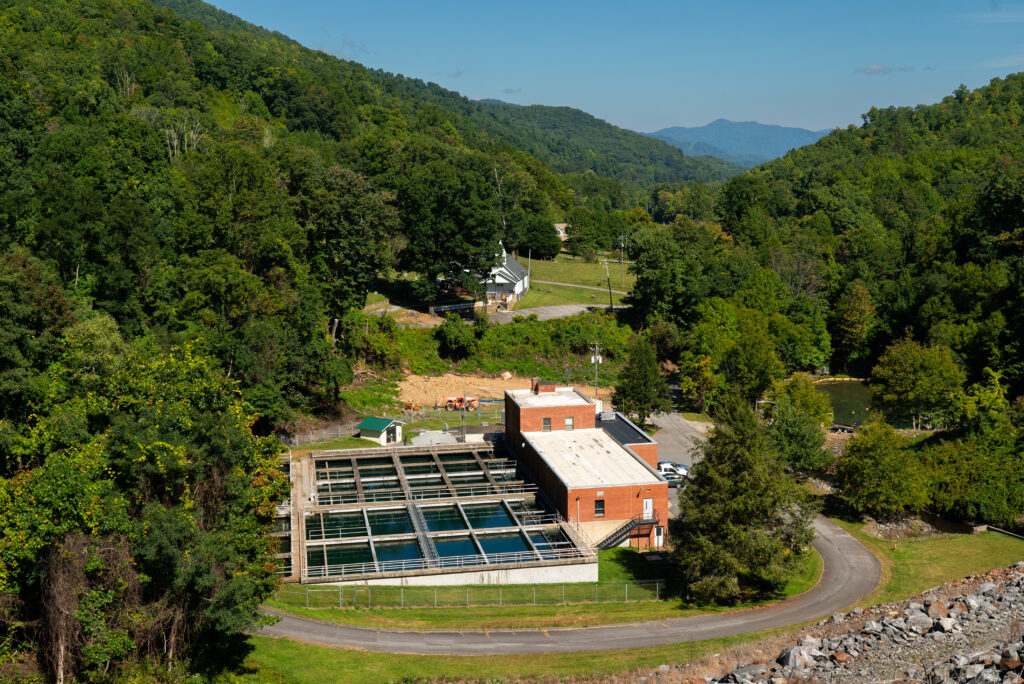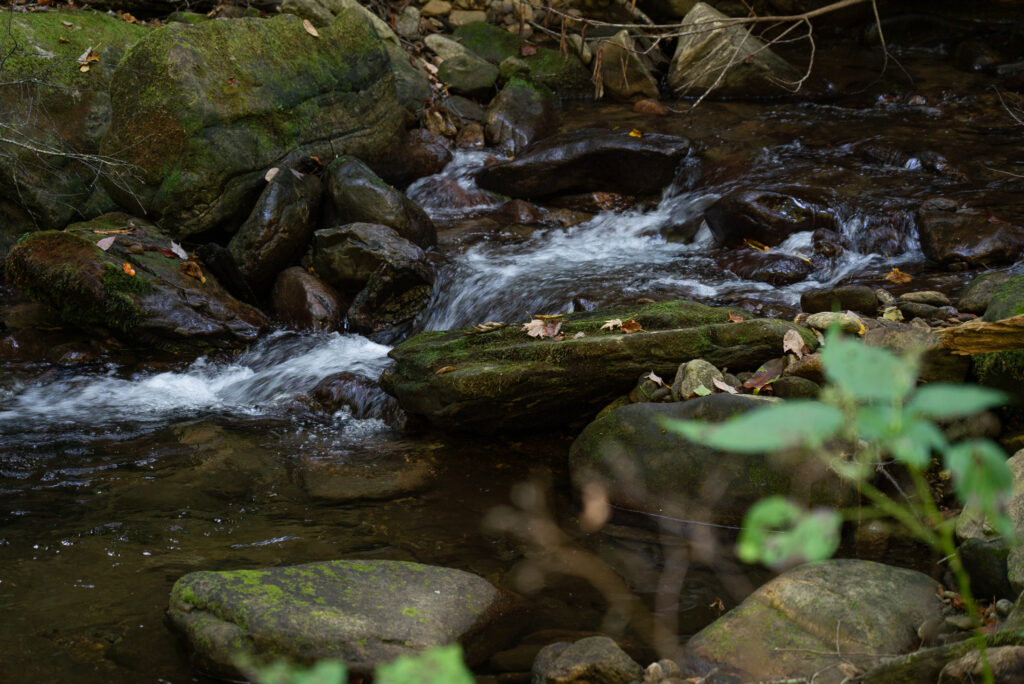Conservation Trust for North Carolina (CTNC) purchased a spectacular 523-acre property on Humpback Mountain in Avery and McDowell counties. The tract borders the Blue Ridge Parkway for nearly 3.5 miles between mileposts 319 and 323.
The Humpback Mountain property contains over three miles of clear-running streams. These tributaries of both the North Toe River and the North Fork Catawba River will remain pristine for wild trout populations and for drinking water supplies for downstream communities. Preservation of the property will also maintain healthy forests and wildlife habitat and will prevent any changes to a potentially developable ridge top bordering the Parkway.
The Conservation Trust purchased the tract with generous funding from Fred and Alice Stanback of Salisbury, the NC Clean Water Management Trust Fund, and the National Fish and Wildlife Foundation’s Acres for America Program.
“Conserving the Humpback Mountain tract is essential to preserving scenic views that draw millions of people to the Blue Ridge Parkway each year,” said Mark Woods, Blue Ridge Parkway Superintendent. “We congratulate the Conservation Trust for North Carolina for protecting its fiftieth property along the Parkway.”
“Permanent protection of the Humpback Mountain property will ensure clean water downstream, contribute to a growing conserved area for habitat, and increase recreational opportunities for North Carolina families,” said Margaret Newbold, CTNC Associate Director.
Preservation of this property expands the existing wildlife corridor linking neighboring state and federally owned properties, increasing the capacity to support healthy animal populations. The tract is adjacent to CTNC’s Little Tablerock Mountain project, which CTNC protected in 2004 and subsequently conveyed to the NC Wildlife Resources Commission (WRC) for inclusion in its Game Lands program. The Conservation Trust will convey the Humpback Mountain property to WRC as well, expanding public access to conserved lands.
Protection of Humpback Mountain continues CTNC’s broader efforts, in close cooperation with local land trusts and government agencies, to protect the highest priority scenic views, streams, and forests along the Parkway. CTNC’s efforts are guided by a sophisticated GIS-based conservation plan and mapping tool to ensure that limited resources are focused on the most critical lands to conserve.
Highlights among CTNC’s 50 Parkway projects include Asheville’s 17,000-acre drinking water supply watershed, Waynesville’s 8,000-acre watershed, and a 1,500-acre property bordering the Orchard at Altapass near Spruce Pine.



 CTNC is like no other organization that works to protect our land and water. As a land trust, CTNC has safeguarded more than 30,000 acres of natural wonders along the Blue Ridge Parkway. And as a champion for the 23 local land trusts across the state, CTNC provides essential funding, advocacy and outreach so that those groups can conserve more land in the communities they serve.
CTNC is like no other organization that works to protect our land and water. As a land trust, CTNC has safeguarded more than 30,000 acres of natural wonders along the Blue Ridge Parkway. And as a champion for the 23 local land trusts across the state, CTNC provides essential funding, advocacy and outreach so that those groups can conserve more land in the communities they serve.



